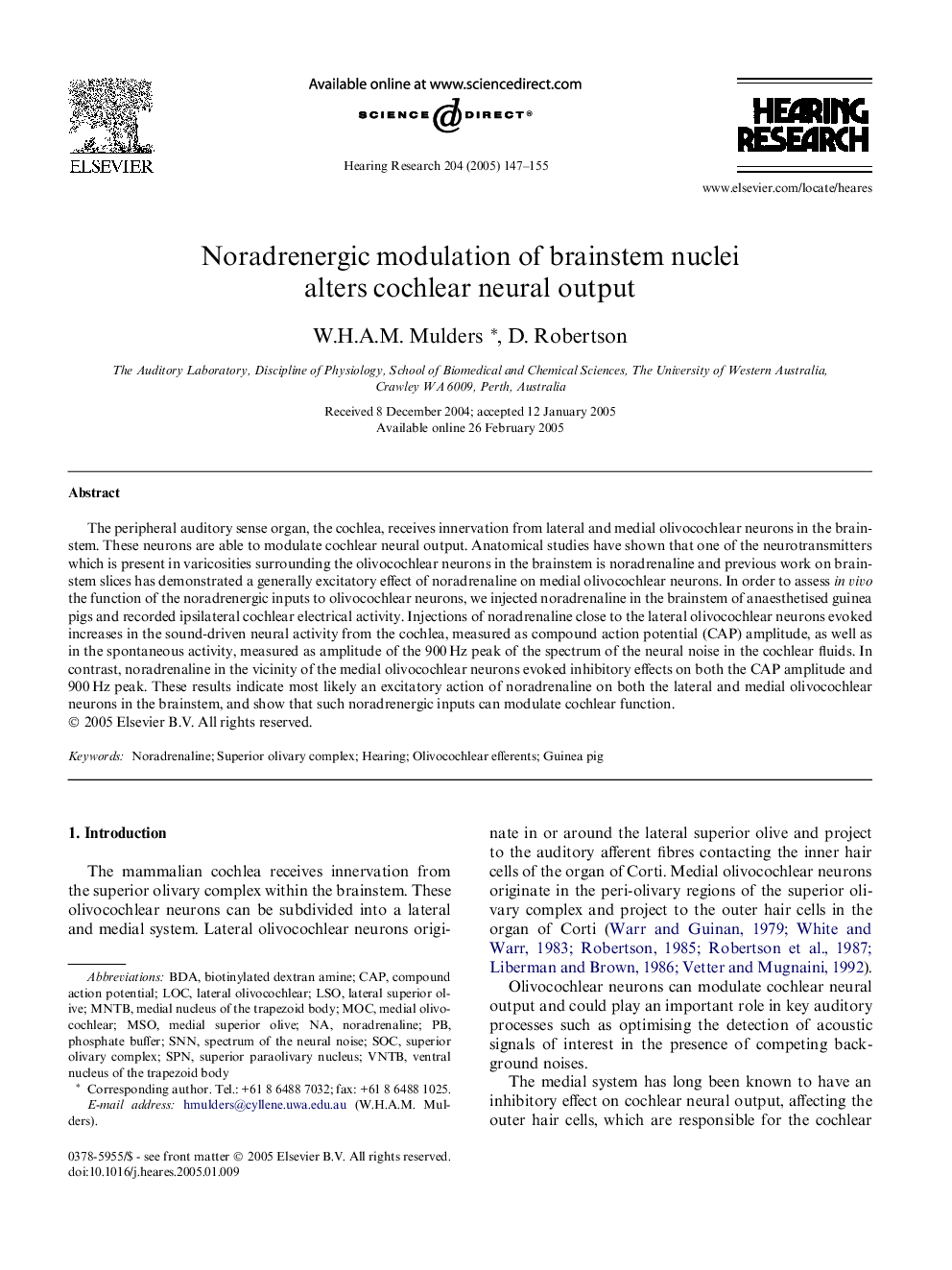| Article ID | Journal | Published Year | Pages | File Type |
|---|---|---|---|---|
| 9436533 | Hearing Research | 2005 | 9 Pages |
Abstract
The peripheral auditory sense organ, the cochlea, receives innervation from lateral and medial olivocochlear neurons in the brainstem. These neurons are able to modulate cochlear neural output. Anatomical studies have shown that one of the neurotransmitters which is present in varicosities surrounding the olivocochlear neurons in the brainstem is noradrenaline and previous work on brainstem slices has demonstrated a generally excitatory effect of noradrenaline on medial olivocochlear neurons. In order to assess in vivo the function of the noradrenergic inputs to olivocochlear neurons, we injected noradrenaline in the brainstem of anaesthetised guinea pigs and recorded ipsilateral cochlear electrical activity. Injections of noradrenaline close to the lateral olivocochlear neurons evoked increases in the sound-driven neural activity from the cochlea, measured as compound action potential (CAP) amplitude, as well as in the spontaneous activity, measured as amplitude of the 900Â Hz peak of the spectrum of the neural noise in the cochlear fluids. In contrast, noradrenaline in the vicinity of the medial olivocochlear neurons evoked inhibitory effects on both the CAP amplitude and 900Â Hz peak. These results indicate most likely an excitatory action of noradrenaline on both the lateral and medial olivocochlear neurons in the brainstem, and show that such noradrenergic inputs can modulate cochlear function.
Keywords
Related Topics
Life Sciences
Neuroscience
Sensory Systems
Authors
W.H.A.M. Mulders, D. Robertson,
